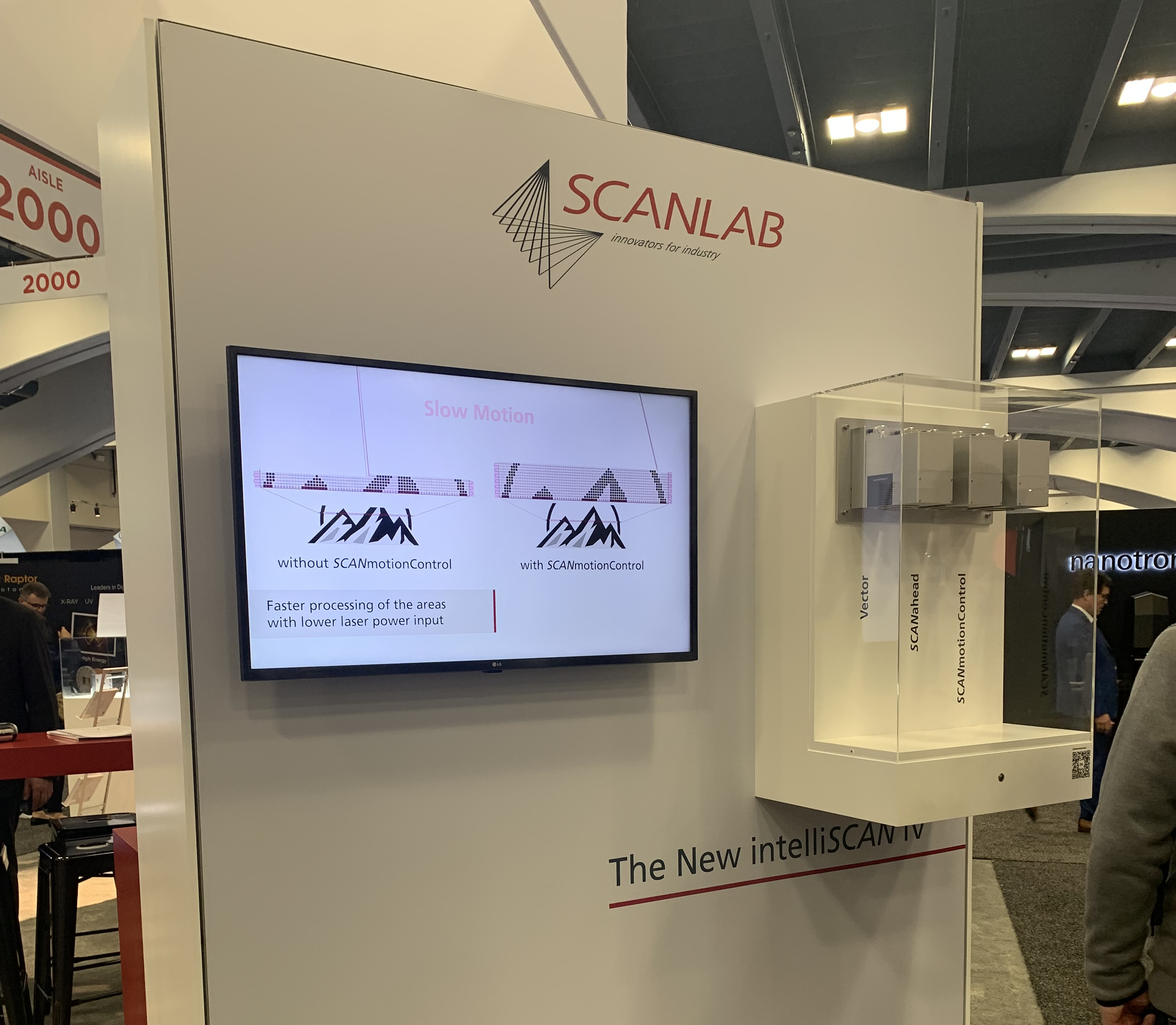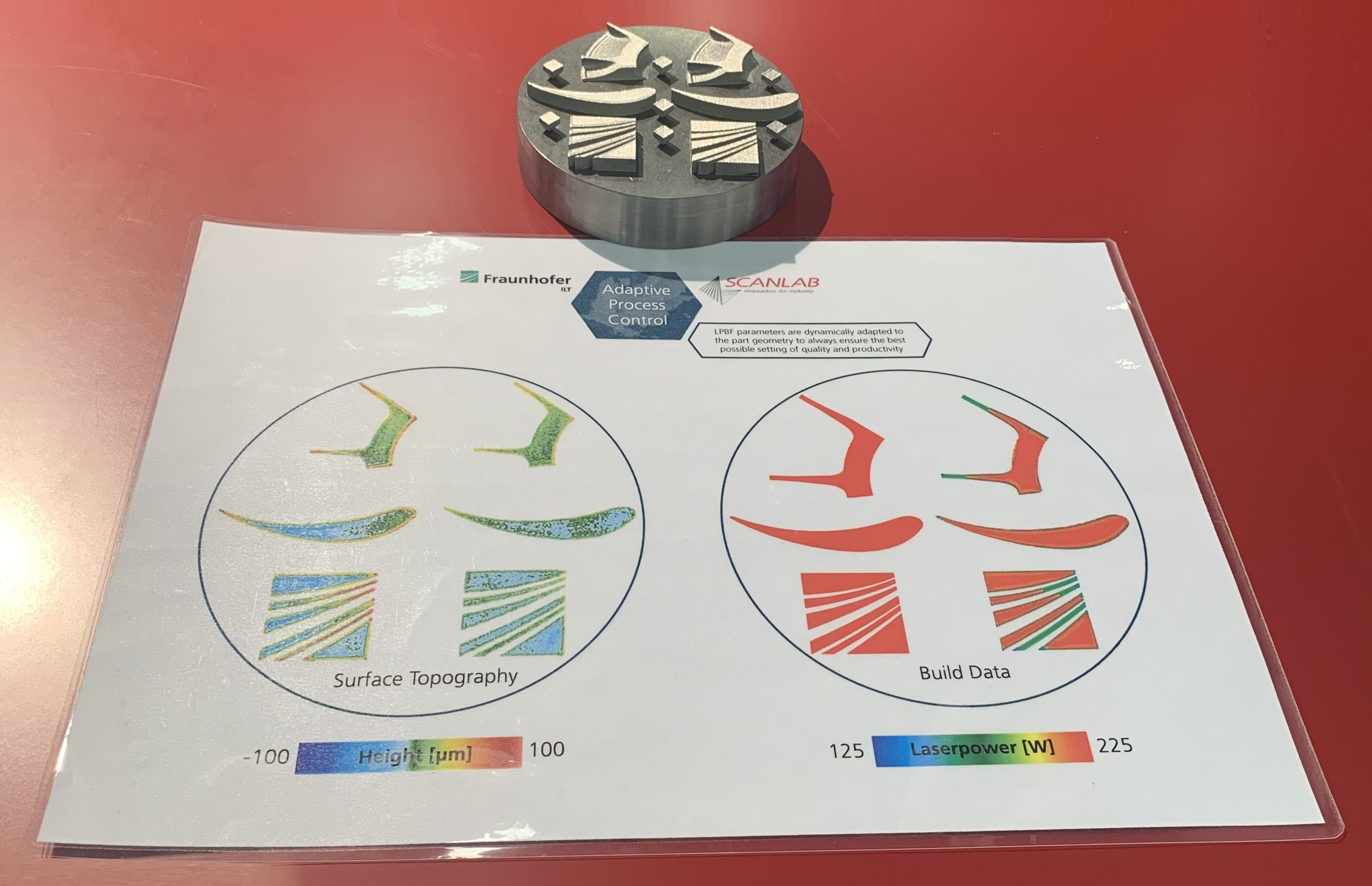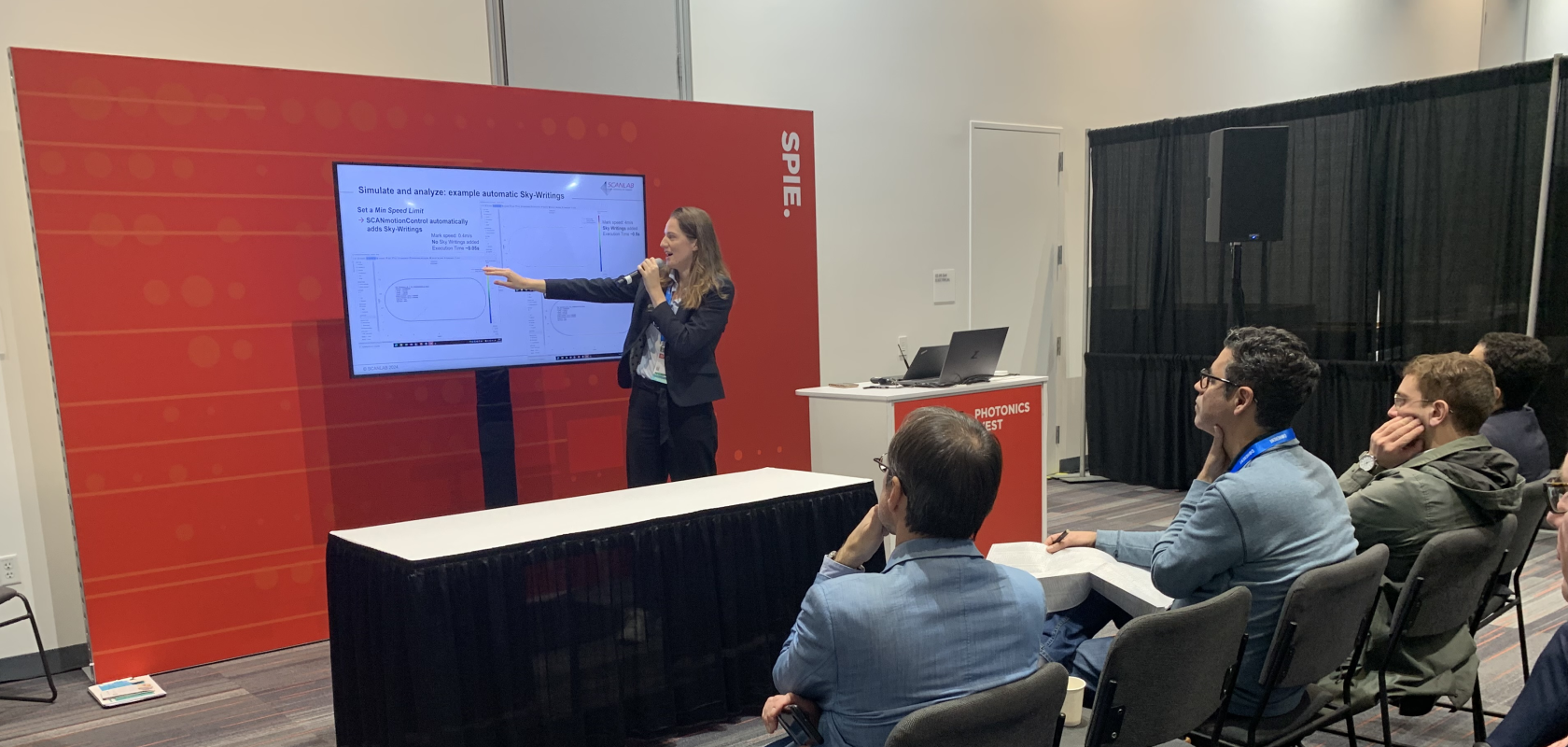This year at Photonics West, SCANLAB, a developer of high-precision scanning solutions for laser materials processing, took advantage of the product demo area on the exhibition floor to showcase its latest software innovation to attendees: SCANmotionControl, designed to run on a PC for use with the firm’s excelliSCAN- and intelliSCAN IV scan heads.
SCANmotionControl calculates optimal trajectories from specified machining patterns and process parameters, synchronising scan head movement and laser control while taking into account the physical limitations of the scan head. The software was developed to address the needs of SCANLAB’s customers in industries with exceptionally high scanning accuracy demands, such as additive manufacturing, electronics, telecommunications, semiconductor and automotive.
“To ensure high-quality, high-throughput manufacturing results, application engineers within these industries are required to identify and optimise the best sets of parameters for their laser processes,” Veronica Schöffel, SCANLAB's Product Manager for Control and Software Solutions for Laser and Scanner Synchronization, explained to attendees during the software demo. “With conventional scanning systems, this can often be a laborious and time-consuming process. This is because the outcome of a selected set of parameters is not usually known until these laser systems have been switched on and the process carried out. Application engineers are therefore required to perform numerous trial-and-error iterations in the lab before the optimum parameters can be identified.”
SCANmotionControl eliminates the need for such trial-and-error by helping users find and optimise their ideal set of parameters quickly, using the power of simulation. Users simply have to input their required geometry, corner tolerance and minimum/maximum process speed. They can also adjust the pulse spacing and energy density of the laser spots in relation to their position.
“Unlike the black box that is conventional scan systems and controllers, we know our scan systems inside-out, and so for the first time we are able to simulate entire laser processes in advance, taking into account the desired processing speed and accuracy,“ said Schöffel. “SCANmotionControl also considers the physical limits of the scan head, and so what you simulate is exactly what you get. Application engineers no longer have to go into the lab and switch on the laser to calibrate it, they simply need to run a simulation to learn how their results will look in the software.”
The SCANmotionContol viewer offers a range of options to perform extensive analysis of the simulation results, displaying the position and dynamic values of the scan head as well as the laser control signals. “This offline analysis saves a lot of time, making this software a valuable tool during the development and integration of new laser processes,” remarked Schöffel.
Ramping up processing speed
In addition to dramatically streamlining laser process development, SCANmotionControl also enables application engineers to improve the speed of laser processes themselves.
“The critical points in most applications, for example laser marking and additive manufacturing, are the corners,” Schöffel explained. “In general, the scanner has to decelerate into a corner and accelerate back out. However, when the power of the laser is kept constant, this leads to higher energy input at the corners, which can lead to burn-in effects. Application engineers are therefore usually required to spend time identifying which parameters are required to mitigate these effects while maintaining scanning accuracy.”

SCANmotionControl simulates the entire laser process beforehand, enabling optimal trajectory planning and power distribution to execute jobs with higher precision and speed
SCANmotionControl uses path-synchronous switching of the laser in order to achieve exact positioning and homogeneous energy input for short scan lines with high scan speeds. The software works seamlessly with SCANLAB’s RTC6 control board to achieve 10 switch-on and switch-off events within 10μs, equating to a frequency of 1MHz. This enables the user to dictate the energy distribution delivered to their workpiece, allowing them to achieve a constant scanning speed while avoiding burn-in defects. “This enables laser processes to be executed extremely quickly and precisely,” said Schöffel.
As an alternative, the software can also dynamically adjust the power of the laser beam rapidly along a scanning vector, which proved very effective during a recent additive manufacturing collaboration between SCANLAB and Fraunhofer ILT. “Researchers at the institute were experiencing issues as their parts were being 3D printed with an uneven surface,” said Schöffel. “Using a constant laser power, they were finding that, due to the distribution of powder across the workpiece, more energy was being absorbed at the edges compared to the centre. So using SCANmotionControl they were able to ramp down the laser power (and thus energy) delivered to the edges of the workpiece while maintaining a constant scanning speed. For example, they could scan for 10 microseconds at 30% laser power across the centre of the workpiece, and then reduce down to 29% for a further 10 microseconds as they process the edges. In doing this they were able to increase the overall surface flatness of their 3D printed part.”

SCANmotionControl enabled Fraunhofer ILT to adjust the energy distribution of its 3D printing to achieve optimal surface topography
Overall SCANmotionControl represents the next evolution in precision laser scanning. The simulation software unlocks faster job planning and application set up times, in addition to shorter processing times through optimal use of scanner dynamics and laser power. What’s more, the software can also be used to configure up to four scanners simultaneously.
For more information, visit: www.scanlab.de.

